Table of Contents
Bloodletting : A Cure or a Curse
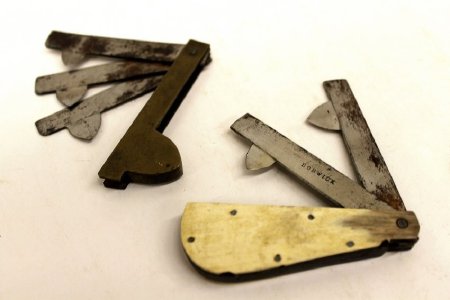
- fleam
- eh10r27
-
- Set of two fleams: one with brass casing and one with bone casing. Fleams were used to cut through the skin in order to start the bloodletting process. This particular style of fleam was used as a veterinary tool, although it is possible they were al... View Full Record
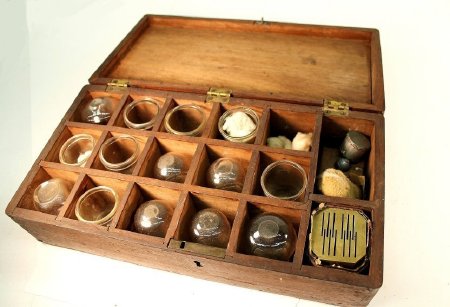
- scarificator
- eh10 r27
-
- Large wooden bloodletting kit containing 13 blown glass cups, one brass scarificator in a black leather case, one glyco-thymoline glass bottle, one sponge, multiple pieces of lambs' wool and metalic pieces, a small tin container full of some sort of... View Full Record

- Scarificater and Cups
- EH10104
-
- Cupping set in wooden box: one octagon shaped scarificater and bleeding cups. The box is lined with tissue paper and lambs' wool is stuffed around the cups and scarifer.
The bleeding cups were used in one of two ways; they were either used to simpl... View Full Record
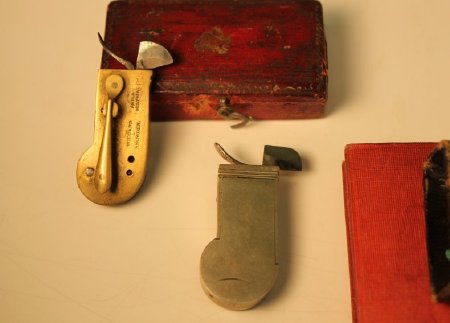
- Bleeders
- EH101324-1
-
- Set of two lancets. The spring lancet was used to make a quick incision in a vein by pulling the level back a releasing the fleam. Although quick and efficient, these spring devices often made cuts either too small or two big, and it was not uncommon... View Full Record
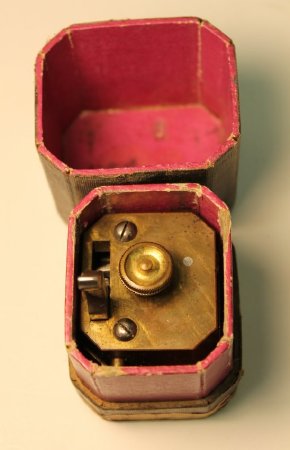
- Scarificator
- EH10142
-
- Brass scarificator in a dark green case with purple interior. Case includes a cloth with the date "1883" stamped onto its back. Spring scarifactors were used to make quick parallel slits in the patient's skin. The patient would then bleed out into a... View Full Record
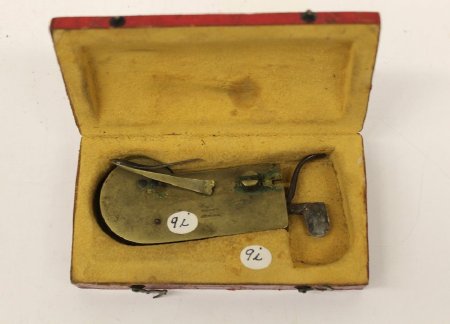
- Lancet
- EH101465
-
- Large brass lancet in a red leather case with tan interior. The company name "Wiegand & Snowden" is engraved into the front and back of the lancet. The spring lancet was used to make a quick incision in a vein by pulling the level back a releasing th... View Full Record
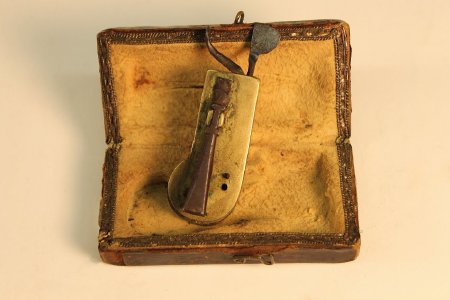
- Lancet
- EH101466
-
- Brass lancet in a small leather box with tan cloth interior. The name "Kole" is imprinted into the leather on top of the box. The spring lancet was used to make a quick incision in a vein by pulling the level back a releasing the fleam. Although quic... View Full Record
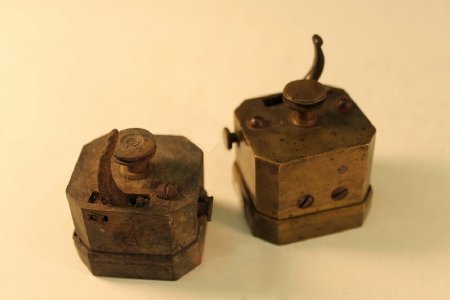
- Scarificator
- EH101536
-
- Set of two 18th-19th century scarificators. Spring scarificators were used to make quick parallel slits in the patient's skin. The patient would then bleed out into a bleeding cup until the doctor retrieved the desired amount of blood.
The scarific... View Full Record
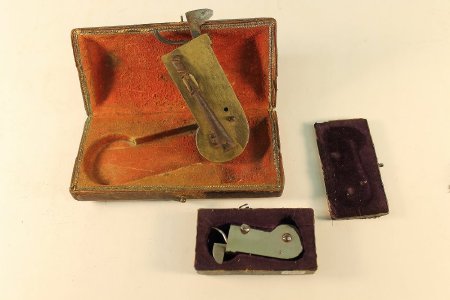
- Lancet
- eh101752
-
- Set of two lancets. The spring lancet was used to make a quick incision in a vein by pulling the level back a releasing the fleam. Although quick and efficient, these spring devices often made cuts either too small or two big, and it was not uncommon... View Full Record
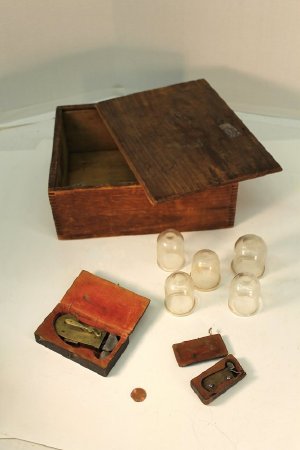
- Lancets
- EH10195
-
- Large wooden box consisting of two spring loaded lancets and five glass bleeding cups.
The bleeding cups (1870-1900) were used in one of two ways; they were either used to simply expand the blood vessels thereby creating a blood filled blister, o... View Full Record

- Lancet
- EH10441
-
- Small brass lancet in small wooden box with cream cloth interior. "London" is printed onto the top of the box. The spring lancet was used to make a quick incision in a vein by pulling the level back a releasing the fleam. Although quick and efficien... View Full Record

- Lancet
- EH10451
-
- Set of two brass, intricately designed lancets in a square leather box with red felt interior. The name engraved on the top of the box, unfortunetly, is illegible. The spring lancet was used to make a quick incision in a vein by pulling the level bac... View Full Record

- Bleeding Cups
- EH10453
-
- Set of nine glass bleeding cups. Bleeding cups were used in one of two ways; they were either used to simply expand the blood vessels thereby creating a blood filled blister, or were used to expand the blood vessels in order to then cut the blister w... View Full Record
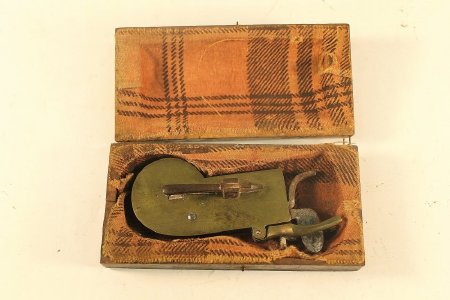
- Lancet
- EH10459
-
- Large brass spring loaded lancet in wooden case with plaid cloth interior. The spring lancet was used to make a quick incision in a vein by pulling the level back a releasing the fleam. Although quick and efficient, these spring devices often made c... View Full Record
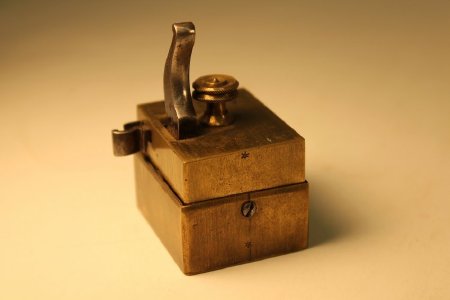
- Scarificator
- EH10490
-
- Square brass scarificator. Spring scarificators were used to make quick parallel slits in the patient's skin. The patient would then bleed out into a bleeding cup until the doctor retrieved the desired amount of blood.
This square scarificator was... View Full Record
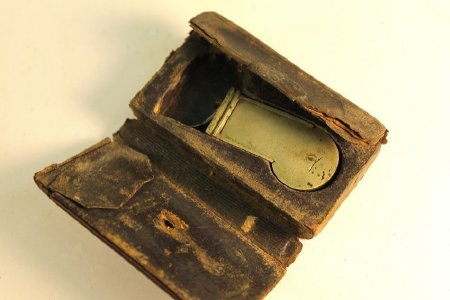
- Lancet
- EH10493
-
- Small silver spring lancet in black leather case with worn gold trim. The spring lancet was used to make a quick incision in a vein by pulling the level back a releasing the fleam. Although quick and efficient, these spring devices often made cuts ei... View Full Record

- Scarificator and Cups
- EH10497
-
- Spring loaded brass scarificator in a small brown leather case with 3 blown-glass cups. Spring scarificators were used to make quick parallel slits in the patient's skin. The patient would then bleed out into a bleeding cup until the doctor retrieve... View Full Record
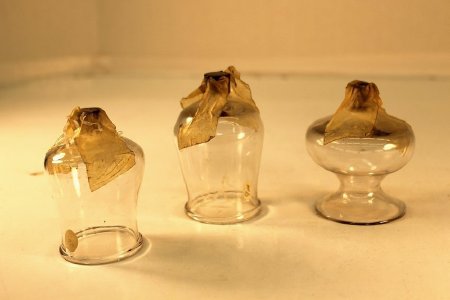
- Bleeding Cups
- EH10503
-
- Set of three glass bleeding cups with metallic covers and knobs. These knobs were most likely used to reduce pressue in the cup.
Bleeding cups were used in one of two ways; they were either used to simply expand the blood vessels, thereby creating... View Full Record

- Scarificator
- EH10820
-
- Brass scarificator. Spring scarificators were used to make quick parallel slits in the patient's skin. The patient would then bleed out into a bleeding cup until the doctor retrieved the desired amount of blood.... View Full Record
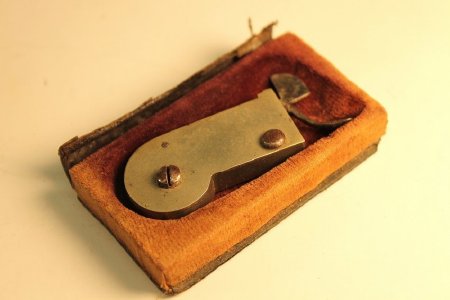
- Lancet
- EH10923
-
- Small metal spring lancet in black leather case with brown velvet interior. Front of case is missing. Came with two old lancet blades.
The spring lancet was used to make a quick incision in a vein by pulling the level back a releasing the fleam. Al... View Full Record

- Fleam
- EH102236
-
- One fleam with brass casing. The initials "RS" are engraved on the handle, presumably the initials of the physician. The fleam contains three blades all showing extensive use and tarnishing. The largest blade appears to have its tip broken.
Flea... View Full Record




















